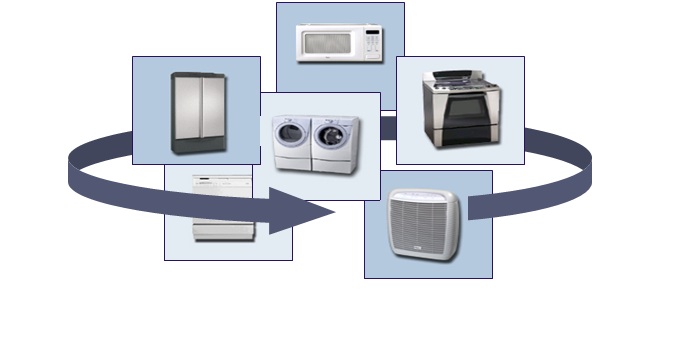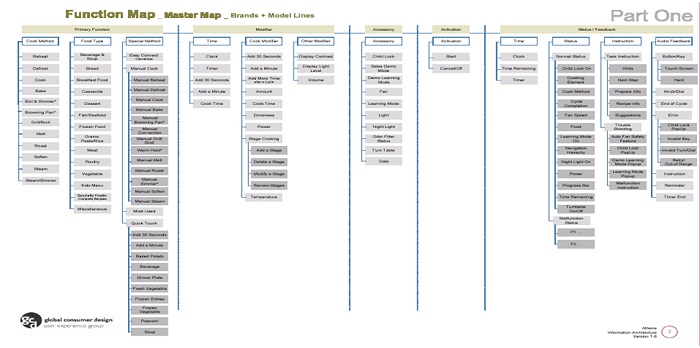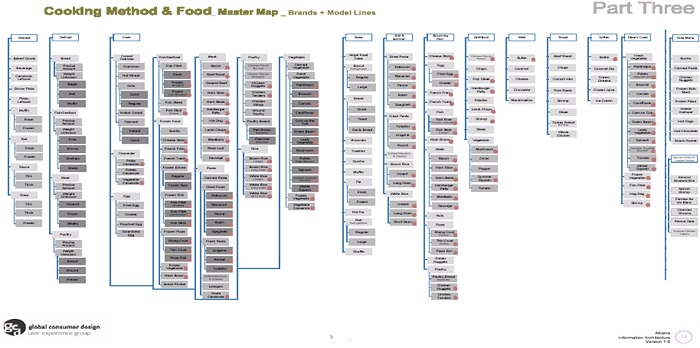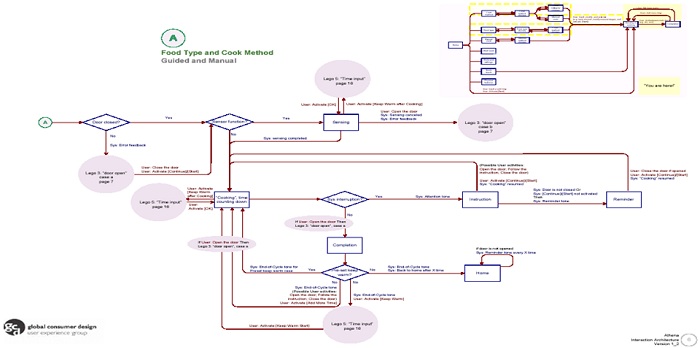Interaction Brand Language
2004-2005
My goal was to create an interaction brand language enabling a consistent user experience across all product categories. While managing the larger North American Usability team, I defined, evangelized, and led this project.
GOALS:
- Create consistent user interfaces and interaction experiences for users within a product, model line, category, and brand.
- Increase consumer benefits
- Common brand experience
- Standardize user interface and interaction
- Cross product generalizable learnings
- Extensible ease of use
- Increase sense of familiarity + control
- Lower consumer-instruct tech support calls
- Improve product usage and satisfaction
- Reduce product learning curve
- Increase Whirlpool benefits
- Increase brand equity
- Strengthen brand identity & recognition
- Increase consumer loyalty
- Increase purchased products (buy suites)
- Reduce costs
- Reduce design + development time
- Improve quality
ACTIONS:
- Sold project concept and plan to 5 division VPs
- Secured a $2M budget and 4 person design team
- Competitive product analysis and Whirlpool product analysis across US and Italy
- Led team through creation of information architecture diagrams and interaction flow diagrams for key products across each product category
- Created and used a new Usability Experience Metric (UXm) to help us assess the impact of our solutions
RESULTS:
- UXm was highly successful
- Enabled us to easily compare products within a platform, across platforms, & across categories
- Compared usability within or across categories, against competition, against brand / biz needs
- Created new methods, tools, and the beginning of an interaction brand language
- Information architectures helped…
- Consistency within and across categories, structures / organization schemes, vocabularies (e.g., “keep warm” vs “warm hold”)
- Predict UI needs
- Plan and compare features across brands and model lines
- Design to accommodate future features
- Interaction models helped…
- Product behavior was designed, not just engineered
- Consistent interaction schemes
- Re-usable architectures (refine don’t re-invent)
- Interaction modules created consistency
- Detailed interaction design specifications reduced engineering development time
- Identified opportunities for innovation
- Generally, moved closer toward 1 brand, 1 suite, 1 UI technology, with 1 UI look, feel, & architecture
- Overall intended major impact was missing as our larger company goals were not adopted by each division



